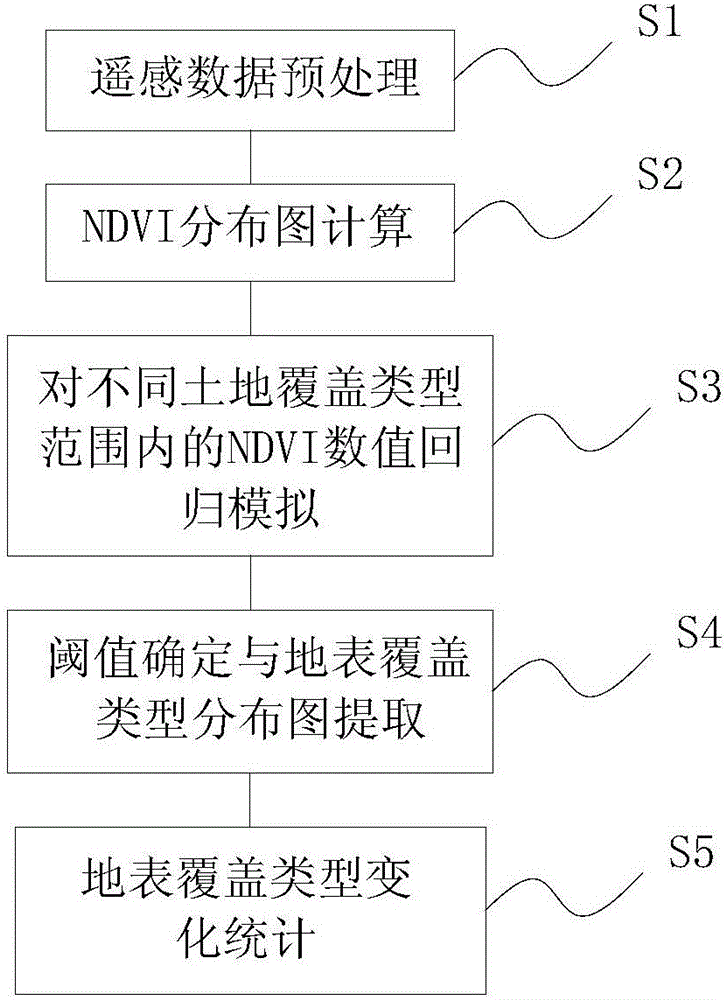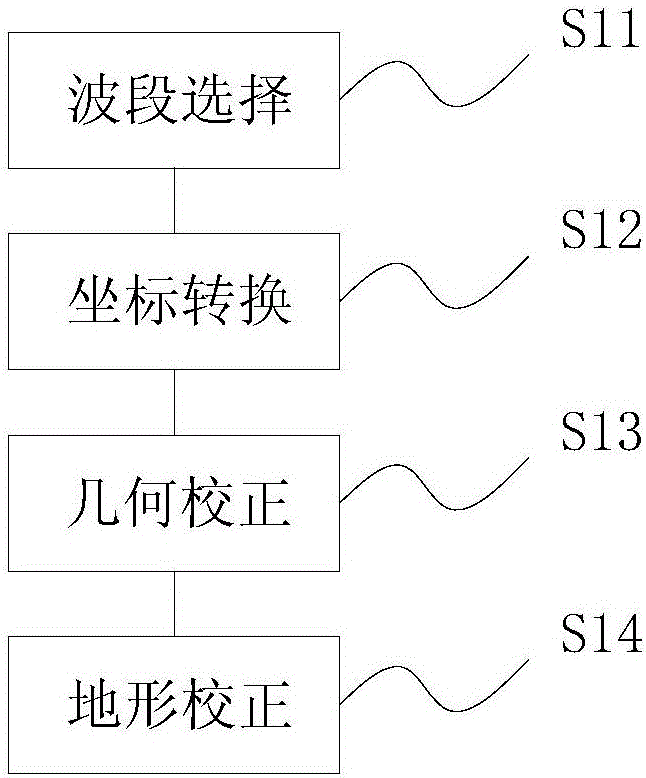Land coverage change algorithm and system based on time-space analysis
A land cover, spatiotemporal analysis technology, applied in the field of spatial analysis, can solve problems such as unsatisfactory universality, difficulty in controlling endogenous noise, and the influence of land cover change detection algorithm results, so as to improve automation and monitoring accuracy and reduce influence. Effect
- Summary
- Abstract
- Description
- Claims
- Application Information
AI Technical Summary
Problems solved by technology
Method used
Image
Examples
Embodiment 1
[0058] Please refer to figure 1 , in one embodiment of the present invention, the land cover change algorithm based on spatio-temporal analysis comprises the following steps:
[0059] S1: Remote sensing data preprocessing:
[0060] Corresponding the remote sensing image with the actual spatial position and characteristics of ground objects;
[0061] The remote sensing images in S1 may come from the same sensor images in different periods, or from different sensors in the same period, or from different sensors in different periods. Such as figure 2 As shown, in this embodiment, the correspondence between the remote sensing image and the actual spatial position and characteristics of the ground object may include the following sub-steps:
[0062] S11: Band selection
[0063] Remote sensing image combing software is used to extract the band used to calculate NDVI data; this band mainly includes the red band and near-infrared band of visible light in remote sensing images.
...
Embodiment 2
[0085] Please also refer to image 3 , this embodiment provides a land cover change calculation system based on spatio-temporal analysis, corresponding to the algorithm in Embodiment 1, specifically including
[0086] The preprocessing module 101 is used for remote sensing data preprocessing, that is, corresponding to the remote sensing image and the actual spatial position and characteristics of ground objects; the preprocessing module is specifically used for:
[0087] Band selection:
[0088] Using remote sensing image carding software to extract the bands used to calculate NDVI data;
[0089] Coordinate transformation:
[0090] Transform the spatial coordinates of remote sensing images of different time phases to form time series data of remote sensing images under the same coordinates;
[0091] Geometric Correction:
[0092] For the images of the same area obtained by different time bands and different sensor systems, establish the corresponding relationship between t...
PUM
 Login to View More
Login to View More Abstract
Description
Claims
Application Information
 Login to View More
Login to View More - R&D
- Intellectual Property
- Life Sciences
- Materials
- Tech Scout
- Unparalleled Data Quality
- Higher Quality Content
- 60% Fewer Hallucinations
Browse by: Latest US Patents, China's latest patents, Technical Efficacy Thesaurus, Application Domain, Technology Topic, Popular Technical Reports.
© 2025 PatSnap. All rights reserved.Legal|Privacy policy|Modern Slavery Act Transparency Statement|Sitemap|About US| Contact US: help@patsnap.com



